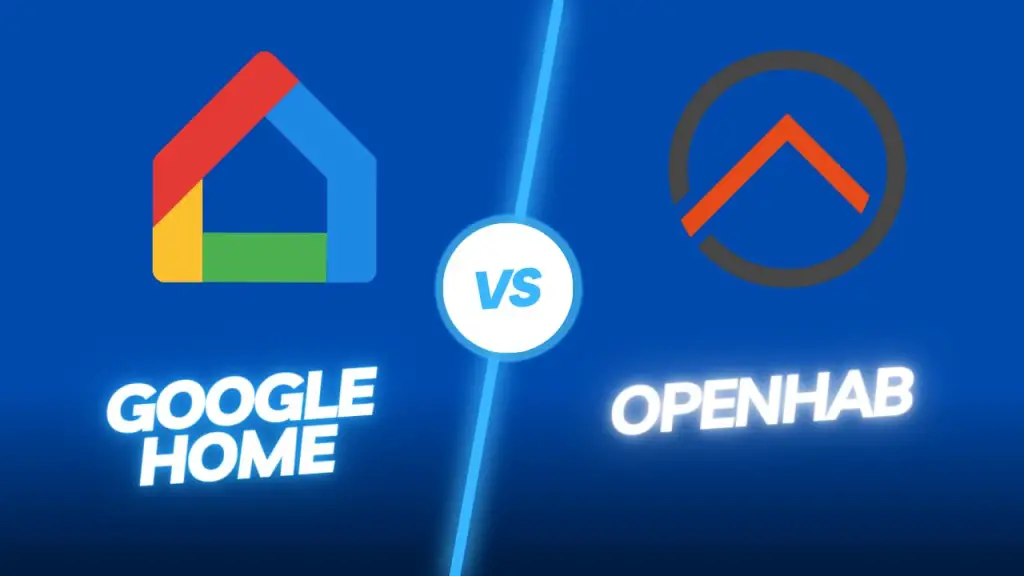Home Assistant Vs Homebridge is very interesting. Both of them are popular for smart home automation platforms with different features and compatibility. Home Assistant is an open-source platform that supports a wide range of devices and is known for its robustness, while Homebridge is mainly designed to integrate non-HomeKit devices into the Apple HomeKit ecosystem.
Both platforms offer unique benefits and it ultimately depends on the user’s specific needs and preferences when choosing between them. Setting up a centralized smart home automation system offers convenience and flexibility, allowing users to control various devices and appliances from a single interface.
We will delve deeper into the differences and strengths of Home Assistant and Homebridge, to help you make an informed decision on which platform best suits your smart home needs. Whether you’re a tech enthusiast or a beginner in smart home automation, understanding the features and capabilities of these platforms is crucial for seamless integration and overall home automation satisfaction.
Features
Home Assistant and Homebridge both offer a range of features for smart home automation. While Home Assistant is known for its wide compatibility and user-friendly interface, Homebridge is praised for its ability to integrate non-HomeKit devices into Apple’s HomeKit ecosystem.
Ultimately, the choice between the two depends on individual preferences and specific smart home requirements.
When considering smart home automation, it’s essential to assess the features of popular platforms such as Home Assistant and Homebridge. The capabilities and functionalities provided by these platforms can significantly impact the overall user experience. Let’s delve into the distinguishing features offered by these two systems.
Home Assistant Features
Home Assistant boasts a comprehensive array of features that set it apart as a leading smart home automation platform. Some of its standout features include:
– Cross-Compatible Integration: Home Assistant supports a wide range of devices and technologies, offering seamless integration with popular smart home devices, including lights, thermostats, and sensors.
– Automated Scenes and Scripts: Users can create intricate automated scenes and scripts to orchestrate a plethora of smart home devices, allowing for personalized and convenient home automation experiences.
– User-Friendly Interface: The platform provides an intuitive and user-friendly interface, enabling easy configuration and customization of smart home devices and system settings.
Homebridge Features
Homebridge, a popular open-source software platform, is well-regarded for its unique set of features, including:
– Bridge for Non-HomeKit Devices: Homebridge serves as a bridge, enabling non-HomeKit-compatible devices to seamlessly integrate with Apple’s HomeKit ecosystem.
– Extensive Plugin Support: With a vast collection of plugins, Homebridge facilitates the integration of a diverse range of smart devices and systems, expanding the scope of smart home automation possibilities.
– Customization and Flexibility: The platform offers extensive customization options, allowing users to tailor their smart home setup according to their preferences and requirements.
By comparing the features of Home Assistant and Homebridge, individuals can make an informed decision when selecting the ideal smart home automation platform suited to their specific needs and preferences.

Credit: whatsmarthome.com
Ease Of Setup And Configuration
When it comes to smart home automation, setting up and configuring the right software is crucial for a seamless and hassle-free user experience. Let’s compare the ease of setup and configuration of Home Assistant and Homebridge to see which one offers a more straightforward and efficient process.
Setting Up Home Assistant
Home Assistant prides itself on a user-friendly installation process. It can be installed on various platforms including Raspberry Pi, Docker, and traditional desktop operating systems. The step-by-step installation guide provided on the official Home Assistant website makes it relatively simple for beginners to set up the software.
Moreover, Home Assistant has a user-friendly web-based interface that simplifies the configuration process. Users can add, remove, and customize components with ease using the intuitive UI.
Setting Up Homebridge
Setting up Homebridge, on the other hand, requires a bit more technical knowledge. It is primarily designed for users who are familiar with command-line interfaces and have some experience with Node.js. Although there are helpful guides available, the initial setup process may be less straightforward for beginners.
Additionally, Homebridge relies on configuring JSON files for managing accessories and plugins, which can be daunting for those with limited programming knowledge.
Integration With Smart Home Devices
When it comes to creating a smart home, one of the key factors to consider is how well your chosen platform integrates with your existing smart home devices. In this article, we will compare two popular smart home automation platforms – Home Assistant and Homebridge – and take a closer look at their compatibility with various smart home devices.
Compatibility With Home Assistant
If you are considering using Home Assistant as your smart home automation platform, you’ll be pleased to know that it offers a wide range of compatibility with different smart home devices. Home Assistant supports a vast array of products from numerous popular brands, giving you the freedom to choose the devices that best suit your needs.
With Home Assistant, you can seamlessly integrate devices such as smart thermostats, lights, cameras, door locks, and more into a unified system. This means you can control all your smart devices through a single platform, providing a convenient and cohesive smart home experience.
Moreover, Home Assistant’s compatibility extends to both local and cloud-based devices. It supports integration with popular protocols like Zigbee, Z-Wave, and Wi-Fi, allowing you to connect and control devices using different communication methods. This versatility ensures that you can include a wide variety of smart devices in your Home Assistant ecosystem, even if they use different technologies.
Compatibility With Homebridge
If you opt for Homebridge as your smart home automation solution, you’ll find that it also offers extensive compatibility with various smart home devices. Homebridge acts as a bridge, allowing you to integrate unsupported devices into the Apple HomeKit ecosystem.
Using Homebridge, you can connect non-HomeKit devices, such as older or unsupported smart home devices, and make them accessible through the Apple Home app and Siri. This makes it especially useful for those who already have a collection of non-HomeKit devices and want to control them all under a unified system.
Through Homebridge’s vast plugin library, you can find plugins for a wide range of devices, including smart plugs, smart cameras, smart speakers, and many others. These plugins act as translators, enabling Homebridge to communicate with and control non-HomeKit devices effortlessly.
In addition, Homebridge supports a variety of communication protocols, including Wi-Fi, Bluetooth, Zigbee, and Z-Wave, ensuring that you can integrate devices using different technologies without any compatibility issues.

Credit: www.youtube.com
User Interface And Design
The user interface and design play a crucial role in the overall experience of using smart home automation platforms like Home Assistant and Homebridge. A well-designed and intuitive interface can greatly enhance the user’s interaction with the system, allowing for easy management and control of various devices and services. In this section, we will explore the user interface and design elements of both Home Assistant and Homebridge, highlighting their respective strengths and weaknesses.
Home Assistant UI and Design
Home Assistant boasts a modern and user-friendly interface that prioritizes simplicity and ease of use. Its clean design and straightforward layout make it easy for users to navigate through different sections and quickly access the desired functions. The UI is organized logically, with various elements neatly categorized and displayed for easy identification. With prominent icons and clear labels, users can easily control and manage their smart devices, access automation routines, and view system analytics at a glance.
One of the standout features of Home Assistant’s UI is its customization options. Users have the freedom to personalize their dashboards, choosing the layout, theme, and widgets that best suit their preferences. This level of customization allows users to create an interface that is tailored specifically to their needs, making it a truly personalized smart home experience. The UI is also responsive and adapts well to different screen sizes, ensuring a seamless experience whether accessing it from a desktop, tablet, or smartphone.
Homebridge UI and Design
The user interface of Homebridge is simple, with a focus on functionality rather than aesthetics. Its minimalistic design may not be as visually appealing as Home Assistant, but it offers a practical and efficient way to interact with smart devices. The UI is organized into a list format, where users can easily find and manage their devices and services.
While the design may be lacking in visual appeal, Homebridge compensates with its flexibility and extensibility. The platform allows for seamless integration with various plugins and extensions, enabling users to add new functionalities and devices to their systems easily. Although the UI might not be as customizable as Home Assistant, the ability to add and configure plugins expands the capabilities of the system, providing users with a wide range of options to enhance their smart home setup.
| Home Assistant UI and Design | Homebridge UI and Design |
|---|---|
| Modern and user-friendly interface | Simple design |
| Customizable dashboards | Flexible integration with plugins |
| Responsive and adaptable to different screen sizes | Functional interface prioritizing functionality |
In conclusion, while Home Assistant excels in terms of its visually appealing and customizable user interface, Homebridge offers a more practical and functional design, with the ability to expand its capabilities through various plugins. The choice between the two platforms ultimately depends on individual preferences, with Home Assistant being an ideal option for those who value aesthetics and personalization, while Homebridge is a suitable choice for users looking for a flexible and extensible solution.
Community And Support
Looking for community and support for your smart home setup? Home Assistant and Homebridge both offer active and helpful online communities, providing valuable guidance and troubleshooting tips for users. Whether you’re a beginner or an experienced user, you can find support and connect with like-minded individuals within these communities.
Home Assistant Community And Support
When it comes to community and support, Home Assistant excels in providing a robust network of resources for its users. The community behind Home Assistant is a vibrant and active one. With a large and passionate user base, Home Assistant has fostered a strong sense of collaboration and knowledge sharing.
In terms of support, Home Assistant offers multiple avenues for users to seek help and advice. The official Home Assistant website provides documentation that is regularly updated and comprehensive, covering all aspects of setting up and configuring the platform. Users can also join the Home Assistant community forums, where they can ask questions, share their experiences, and receive assistance from other community members.
Additionally, Home Assistant has an active presence on social media platforms such as Reddit, Twitter, and GitHub. Users can follow these channels to stay up to date with the latest developments and engage with the Home Assistant community.
Homebridge Community And Support
While Homebridge is also supported by a dedicated community, it may not have the same level of activity and resources as Home Assistant. However, this does not mean that support is lacking for Homebridge users.
Similar to Home Assistant, Homebridge has an official website that provides documentation and guides to help users get started. The website also hosts a community forum where users can seek assistance and engage with other Homebridge users.
While the Homebridge community may be smaller compared to Home Assistant, it is still a valuable resource for users. Users can also find support through various social media channels and online platforms where Homebridge users come together to share their experiences and offer help.
In conclusion, both Home Assistant and Homebridge have active communities and resources available to support their users. While Home Assistant may have a larger and more established community, Homebridge still provides a valuable support network for its users.

Credit: everythingsmarthome.co.uk
Frequently Asked Questions For Home Assistant Vs Homebridge
What Is Home Assistant And How Does It Work?
With Home Assistant, you can monitor and control a variety of devices in your house using an open-source home automation platform. It works by integrating with a wide range of smart devices and platforms, allowing you to automate and control them all from a single interface.
What Is Homebridge And Why Should I Use It?
Homebridge is a software that allows you to integrate non-HomeKit devices into your Apple HomeKit ecosystem. It acts as a bridge, translating the protocols of different devices into a language that HomeKit understands. Using Homebridge, you can control all your smart devices through the Home app on your Apple devices.
What Are The Main Differences Between Home Assistant And Homebridge?
While both Home Assistant and Homebridge are home automation platforms, there are some key differences. Home Assistant is more comprehensive and supports a wider range of devices and platforms. Homebridge, on the other hand, focuses specifically on integrating non-HomeKit devices into the Apple HomeKit ecosystem.
Can I Use Both Home Assistant And Homebridge Together?
Yes, you can use both Home Assistant and Homebridge together. You can integrate Homebridge into Home Assistant, allowing you to control non-HomeKit devices through the Home Assistant interface. This gives you the flexibility to use both platforms and take advantage of the wider device compatibility of Home Assistant.
Conclusion
To sum up, Home Assistant and Homebridge both offer unique functionalities for transforming your house into a smart home. Home Assistant excels in its versatility, supporting a wide range of devices, while Homebridge stands out for its seamless integration with Apple’s ecosystem.
The decision between the two ultimately comes down to your requirements and tastes. Regardless of which platform you choose, both Home Assistant and Homebridge provide excellent options for enhancing your home automation experience.

I am a technology writer and blogger with 17 years of experience in the fields of information technology, artificial intelligence, cyber security, automated systems, and the latest technology trends.

